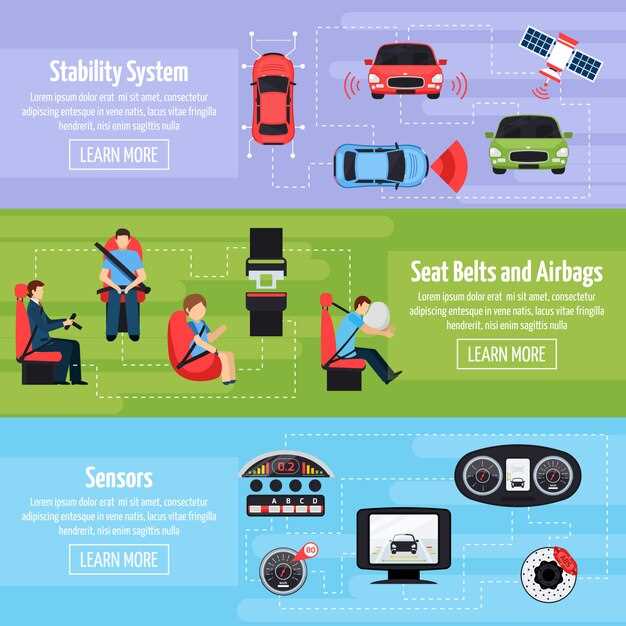
The advancement of automotive technology has significantly enhanced vehicle safety, with the airbag system being one of the most critical components in modern cars. The Ford airbag system is engineered to provide crucial protection in the event of a collision, aiming to reduce injuries to the driver and passengers. Understanding how this system works can help car owners appreciate its importance and ensure they maintain it properly.
At its core, the Ford airbag system consists of multiple components that work in harmony to deploy airbags at the right moment. Sensors strategically placed throughout the vehicle detect a collision’s force and direction, signaling the airbag system’s control unit to respond almost instantly. This rapid deployment is vital in providing a cushioning effect, minimizing the risk of severe injuries during an accident.
In addition to the mechanics of deployment, it is also essential to understand the various types of airbags present in Ford vehicles. Front, side, and curtain airbags each serve different purposes, enhancing overall safety by protecting occupants in various types of collisions. Knowledge of these systems not only informs drivers about their vehicle’s protective features but also emphasizes the importance of regular maintenance and safety checks.
Mechanics Behind Deployment: How Ford Airbags Activate in Crashes
The Ford airbag system is designed to enhance safety by providing crucial protection during vehicle collisions. It operates through a series of sensors and electronic components that work in unison to detect a crash. These sensors include accelerometers and impact sensors that monitor sudden deceleration and changes in velocity.
When a collision occurs, the sensors send signals to the airbag control unit, which is the brain of the system. This unit assesses the severity of the impact and determines whether deployment is necessary. If the impact exceeds a predetermined threshold, it triggers the deployment sequence of the airbags.
The activation involves igniting a chemical propellant within the airbag module. This propellant creates gas that rapidly inflates the airbag within milliseconds. The airbags are designed to deploy in specific areas, such as the front, side, or curtain, depending on the nature of the crash. This targeted deployment enhances passenger protection by providing a cushion that absorbs energy, minimizing potential injuries.
Once deployed, the airbags remain inflated for a short duration before deflating quickly, allowing occupants to maintain visibility and mobility. After the incident, the system records data related to the crash, which can be used for analysis and improvements in safety features. Understanding these mechanics emphasizes Ford’s commitment to vehicle safety, ensuring that occupants are well-protected in the event of an accident.
Maintenance Tips: Ensuring Your Ford Airbag System is Always Ready

Regular maintenance of your Ford airbag system is crucial for ensuring it functions properly in the event of an accident. Start by checking the airbag warning light on your dashboard. If this light is illuminated, it indicates a potential issue that requires immediate attention.
Next, consult your vehicle’s owner manual for specific recommendations regarding airbag maintenance. This will provide guidelines on when to have inspections performed and what components should be checked regularly.
In addition to professional inspections, avoid modifying or tampering with the airbag system. Aftermarket accessories or alterations can compromise the effectiveness of the airbags. Ensure that any repairs or replacements are performed by certified Ford technicians.
Inspect your seatbelts regularly, as they work in conjunction with airbags to protect you during an impact. Look for fraying or damage and replace them if necessary. Also, keep your vehicle’s interior free from obstructions that may impede the deployment of the airbags.
Lastly, consider the age of your vehicle. Airbags have a shelf life, and older vehicles may require more frequent checks or even replacement of the airbag modules. Staying informed about your vehicle’s airbag system can make a significant difference in your safety on the road.
Common Misconceptions: What Myths About Airbags You Should Ignore

One prevalent myth regarding airbags is that they are sufficient on their own to protect occupants during a crash. In reality, airbags are designed to work in conjunction with seatbelts. Without wearing a seatbelt, individuals are at a greater risk of injury, as airbags alone cannot prevent all types of injuries in an accident.
Another common misconception is that airbags are dangerous for short or smaller individuals. While it is true that the force of an deploying airbag can cause injuries if a person is too close, modern airbag systems have been designed with features to mitigate this risk. Adjusting the seating position and using the vehicle’s settings appropriately enhances safety for all occupants.
Many people also believe that airbags deploy in every accident. This is inaccurate, as airbags are triggered by specific factors, such as the severity of the impact. In minor collisions or situations where the vehicle does not meet the predetermined activation criteria, airbags may not deploy at all.
Some assume that once an airbag has deployed, it cannot be reused or repaired. However, while deploying airbags do require replacement, the airbag system can be reset and made functional again after a crash, provided that other components have not been damaged.
Lastly, there’s a myth that airbags can go off at any time, posing a risk of accidental deployment. Airbags are equipped with sophisticated sensors and mechanisms that significantly minimize the chances of unintentional activation. They only deploy in circumstances where a crash is detected, thus enhancing vehicular safety rather than compromising it.



